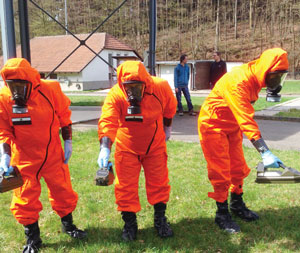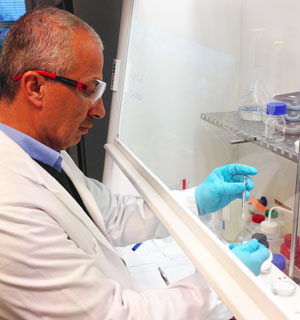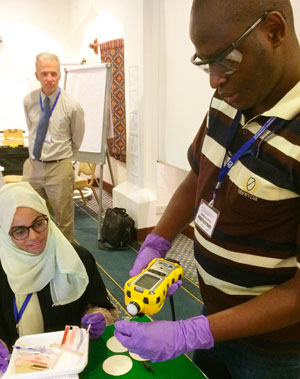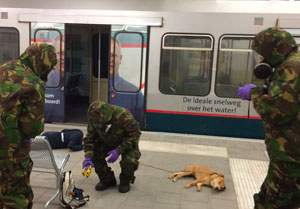Chemical weapons experts at Livermore provide training to at-risk nations for detecting and responding to chemical threats, which help ensure governments remain committed to international nonproliferation agreements.
Responding to the Threat of Chemical Weapons
Chemical weapons are perilous instruments of mass destruction. In 1988, for example, Saddam Hussein killed 5,000 Iraqi citizens with chemical weapons. Several years later, in 1995, a Japanese cult released a nerve agent in a Tokyo subway that resulted in 13 deaths and thousands of injured people. In response to these threats, nations need the ability to identify and prioritize chemical security risks and investigate suspicious chemical incidents. However, some at-risk nations have a limited capacity to initiate or upgrade their detection, response, and forensic programs. They need support from experts who can help them respond effectively.
Ensuring National Security
For more than 15 years, the Forensic Science Center (FSC) at Livermore has served as an internationally certified laboratory for identifying chemical warfare agents (CWAs). The FSC is one of only two facilities in the United States certified by the Organisation for the Prohibition of Chemical Weapons to analyze samples from suspected chemical weapons production facilities. In addition to verifying the presence of CWAs, FSC chemists analyze evidence after a suspected event to determine which toxins were involved and how the weapon was made. Both activities reduce the likelihood of chemical weapons usage and help ensure national security.
Chemical Threat Response Training
As part of the U.S. Department of State’s Chemical Security Program, scientists from the FSC develop and conduct training programs for national governments on identifying and responding to chemical weapons threats. The training covers three key areas: emergency response, evidence collection, and forensic sample analysis. FSC scientists teach local first responders to perform site assessments and collect evidence when responding to an emergency situation. They also help partner nations establish forensic laboratories and teach them how to examine samples using analytical equipment.
International Training
Since 2013, Livermore has led 30 training exercises in five countries—Iraq, Turkey, Lebanon, Jordan, and Yemen. Livermore scientists collaborate with each government’s designated agencies to identify needs and deliver training. In addition, Livermore experts conduct train-the-trainer programs, enabling local leaders to pass on their skills and knowledge to others.
Putting Response into Practice
When Livermore scientists visit other nations, they conduct tabletop exercises where they explain how to use tools for chemical detection and screening. Participants learn to identify the properties of hazardous chemicals, determine whether chemical surrogates are toxic, and classify different types of toxins. They also study ways of identifying low-risk chemicals associated with common industrial activities.
Another key part of chemical threat response training involves realistic field exercises. Participants engage in scenarios such as searching outdoors for suspected munition fragments, aiding victims exposed to chemical toxins, or examining a suspected chemical weapons laboratory. During these activities, participants practice with specialized detection equipment, such as handheld devices, that can measure temperature and oxygen levels. They also demonstrate how to safely collect samples and other evidence for forensic laboratories to determine if CWAs were used.
Practicing Safety
Working in hazardous environments poses multiple safety risks for first responders. Livermore staff train first responders in safety procedures and familiarizes them with protective equipment such as air-purifying respirators, face shields, and chemicalresistant clothing. Instructors also teach participants to avoid exposure and prevent spreading contamination by establishing hot (significant contamination), warm (degraded contaminants), and cold zones (contaminant-free). During field exercises, first responders establish a decontamination line when exiting the hot zone. Finally, physicians provide an overview of medical countermeasures for CWAs.









